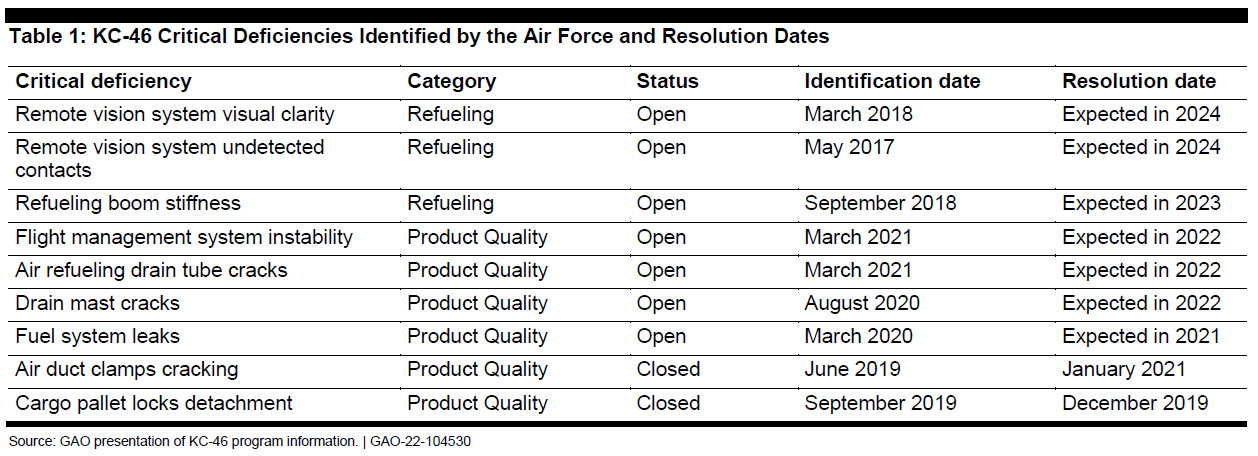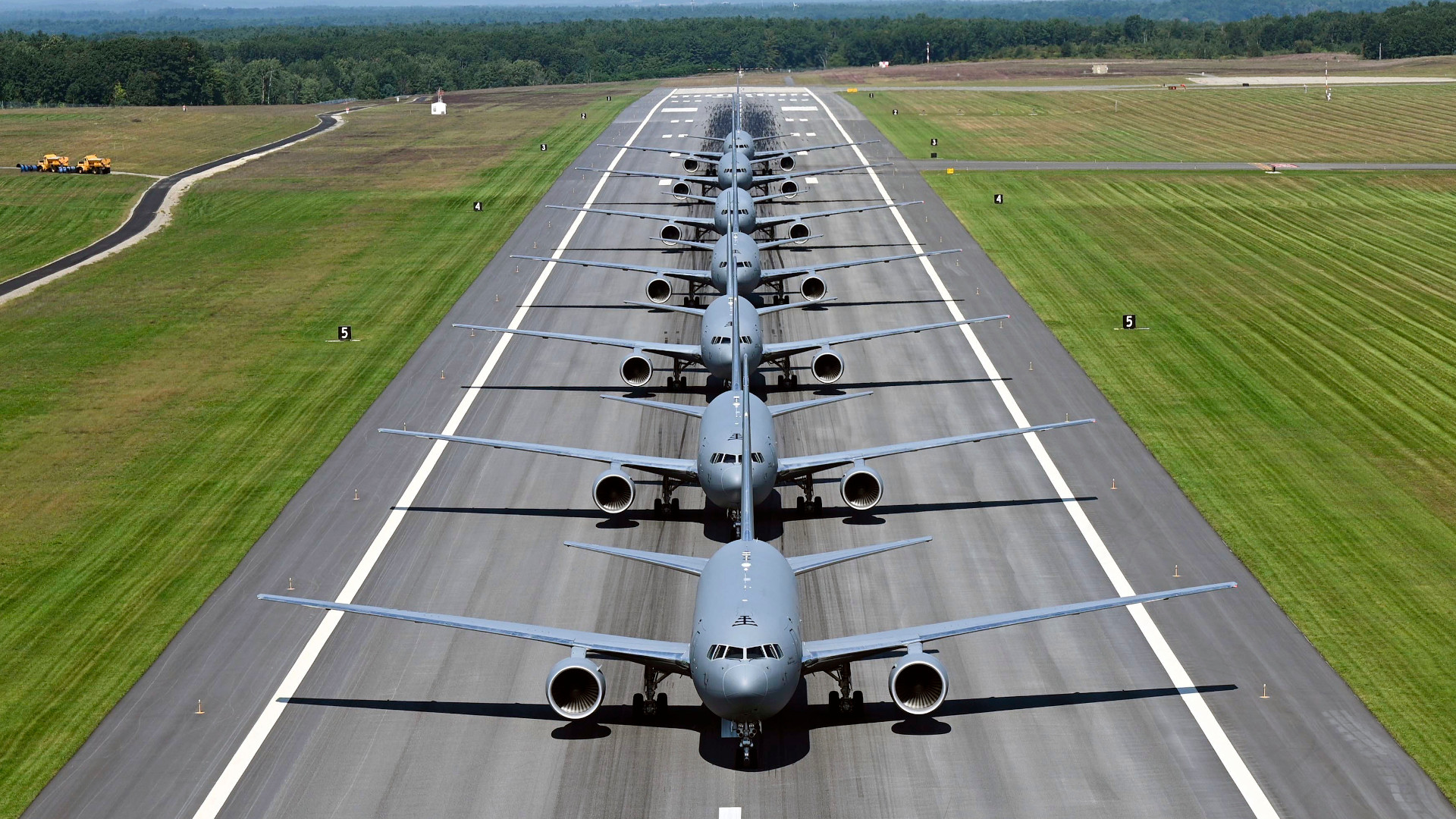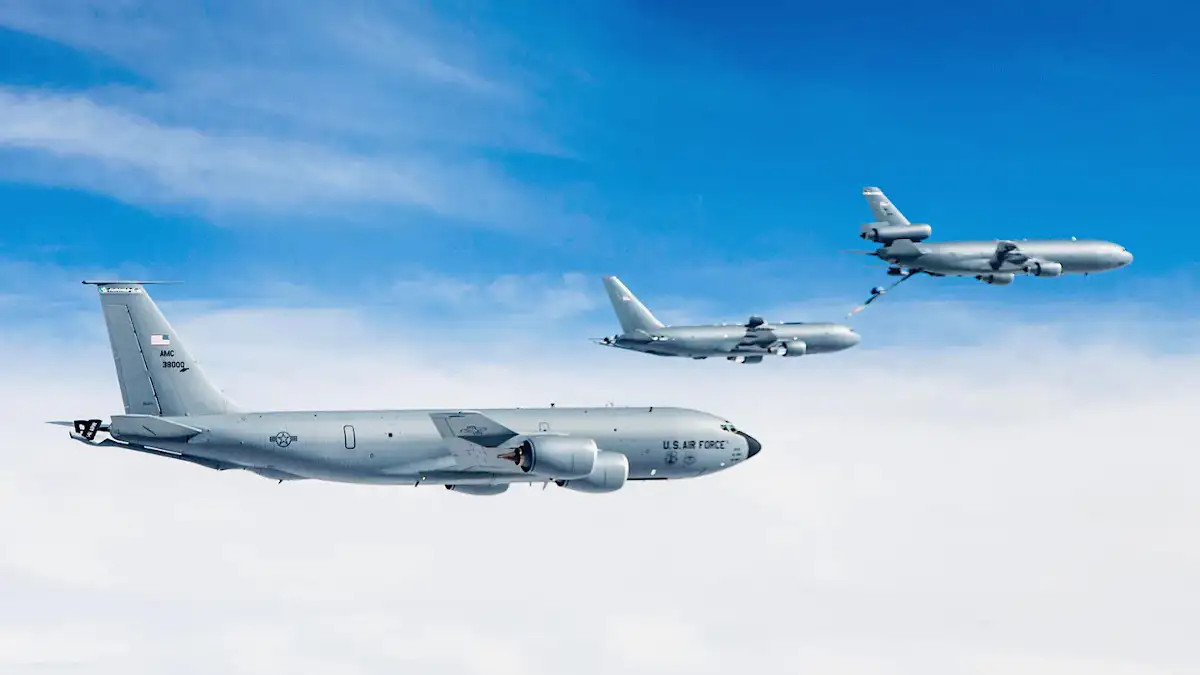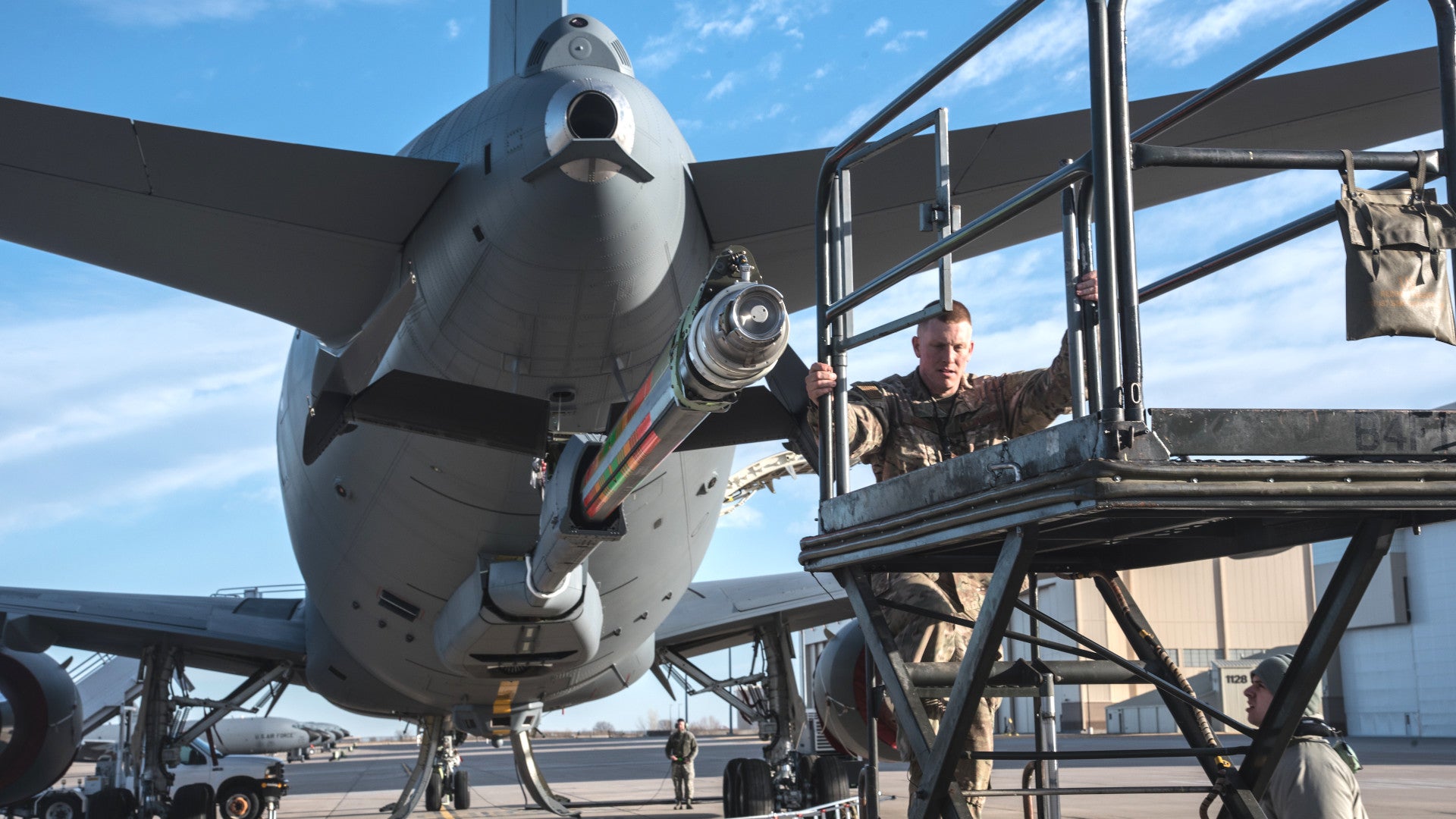A new report from the U.S. Government Accountability Office, a congressional watchdog, says that the U.S. Air Force will not begin to receive KC-46A Pegasus aerial refueling tankers that incorporate key fixes to the design until 2026 at best. This new review of the program also warns the service’s plans to rectify these deficiencies, especially those related to the aircraft’s long-troubled Remote Vision System and boom, present new risks that could lead to further delays.
The U.S. Government Accountability Office (GAO) released its latest report on the KC-46A today. Earlier this month, the aircraft’s manufacturer Boeing marked the milestone delivery of the 50th Pegasus to the Air Force. The service has ordered 91 of the tankers so far and expects to purchase at least 175 of them, in total, in the coming years. Various critical deficiencies continue to limit how and when the aircraft can be employed in their primary role as aerial refueling military aircraft.
“The availability of KC-46 aircraft that meet the requirements set out for them is critical for Air Force to meet the needs of the warfighter,” GAO’s report says “While the warfighter is using the KC-46, it is partially capable, and any further delays will limit how the aircraft can be used.”
As of last year, there were currently seven unresolved issues with the KC-46A that the Air Force categorizes as critical deficiencies, according to GAO. Boeing and the Air Force expected fixes for continuing issues relating to instability with the flight management system, cracking in the air refueling drain tubes and in separate drain masts, and fuel system leaks, to start being integrated into existing and new production aircraft between 2021 and 2022.

However, Boeing remains years away, at least, from rectifying the problems involving the Remote Vision System (RVS), as well as the boom itself, long-standing and serious problems that you can read more about in detail here. On the KC-46A, boom operators sit in the main cabin and utilize the RVS, a hybrid 2D/3D vision system that incorporates feeds from multiple video cameras at the rear of the plane, to remotely guide the boom into receiving aircraft. Boom operators in all previous Air Force tankers have physically sat or lied in a position at the rear of the aircraft while performing this job.

“The Air Force projects the retrofit for the new remote vision system on the first 18 aircraft to span 9 months, from May 2024 through February 2025,” according to GAO. “The Air Force also projects the retrofit schedule for the new boom on the first 18 aircraft to start almost 2 years after finalizing the design in September 2023, and to take roughly 6 months, from July 2025 through January 2026. Given these estimates, the 18 aircraft in the final production configuration with the new boom and RVS will not be available until after January 2026.”
When the Air Force awarded Boeing its first KC-46A contract in 2011, the plan was to have reached an initial operational capability with these tankers in their primary role as aerial refuelings by 2017. Just last year, the Air Force finally approved the use of the Pegasus in actual operational scenarios, rather than just in support of training and other non-combat missions, but only to refuel C-17 cargo planes, B-52 bombers, and other KC-46As.
In addition, GAO’s new report raises concerns that new delays may emerge given the Air Force’s current plans to rectify the RVS and boom issues, which it crafted in coordination with Boeing. The Congressional watchdog says that Air Force officials have decided not to assess the revised RVS design’s technology readiness level before implementing the fix or to develop a plan to make sure key technologies are mature before integrating the revised system in actual aircraft. There is also no plan to flight test a KC-46A in the fully revised configuration before work to install the new systems on existing and new production aircraft begins.
The obvious fear is that, without this kind of developmental planning and testing, new issues might emerge later on that require additional fixes. Beyond further delaying the ability of the Air Force to get the most out of its KC-46As, this could be costly to the Air Force. In October 2021, the service reached a deal with Boeing in which it agreed to pay for any further changes to the RVS after the completion of the preliminary design review of the revised system.
The initial KC-46A contract was a firm, fixed-price award and Boeing has had to pay entirely out of pocket to fix the vast majority of issues with the aircraft. Just this week, the company disclosed that it had incurred another $402 million charge relating to work on the RVS last year in a report on its earnings in the last quarter.

The Air Force disagreed with all GAO’s recommendations in its report.
“The Air Force stated that the program and the contractor, aided by industry experts, worked closely to develop a best practical design and noted that it is using a risk management process coupled with efforts to monitor technical performance,” according to GAO. “The Air Force stated that, given these steps, (1) it is unlikely that a TRA [technology readiness assessment] would identify any new risks, and (2) a TRA would require between 6 and 12 months to accomplish, which would lead to schedule growth.”
“The Air Force reiterated that the program is using a risk management process, in lieu of developing a TMP, because the program is attempting to deliver the new RVS to the warfighter more quickly,” the report adds. “The Air Force states that it has a process to identify risks to the system, mature the technology, reduce risks, and reach performance objectives.”
“The Air Force states that testing a full prototype of the new RVS is not practical because the system is highly integrated,” GAO’s review explains. “The Air Force states that testing an integrated prototype would delay the program approximately 18 to 24 months and significantly delay fielding of the system to the warfighter. The Air Force states that prototypes of the cameras have flown, and that the display has been evaluated in the laboratory.”
GAO says it stands by its recommendations, pointing to previous reports on the KC-46A program that have exposed significant past failures on the part of the Air Force to accurately assess the maturity of the design and key components, including the RVS and the boom.
“The Air Force is relying on the contractor’s own assessment of the critical technologies,” GAO says “The program has already witnessed several years of schedule growth for reasons including unrecognized technical immaturity of the original RVS. This situation was not discovered until flight tests, and after the preliminary and critical design reviews.”
Furthermore, “the plan acknowledges that the LWIR [long-wavelength infared] boom camera—a critical technology for achieving the requirements related to covert operations—remains at a high risk of not meeting performance requirements,” according to GAO. “The plan, as of December 2021, does not specifically address ensuring critical technologies are mature prior to closing PDR [preliminary design review] or detail when those technologies will be mature afterward. Furthermore, the plan does not address the LWIR panoramic cameras, although not a critical technology, even though the RVS program manager said they will not meet requirements to detect and recognize fighter-sized aircraft within required distances absent significant hardware changes.”
“Program officials acknowledged that existing risk mitigation efforts, primarily software improvements, may not fully address known concerns and that a new LWIR camera may be needed,” GAO’s report notes. “Without developing a TMP [technology maturation plan] that outlines the steps to sufficiently mature the RVS critical technologies prior to closing the PDR, the Air Force is choosing to take on unknown levels of costs for any future hardware changes associated with the LWIR cameras.”
Beyond all this, “the Air Force claims it does not have time to test a prototype, but the KC-46 is already 7 years behind schedule due to the flaws with the original design,” GAO points out. “In addition, the Air Force is already using the KC-46 with the deficient design in instances it has determined it is safe to do so. Furthermore, as noted in the report, AMC [Air Mobility Command] acknowledged it can still meet air refueling requirements if the new RVS is delayed past its current projections.”
GAO’s report does acknowledge that the Air Force is under pressure to meet growing demands for aerial refueling capacity, which it is having increasing difficulty meeting with its existing KC-135 and KC-10 tanker fleets. Despite delays and other issues with acquiring fully-capable KC-46As, the service has already begun retiring KC-10s and is looking to send hundreds of KC-135s to the boneyard in the coming years.

At the same time, GAO’s report highlights continued discussions about the possibility of using private contractors to help meet some of this demand for tankers. In addition, the Air Force is now looking to buy additional tankers, which will not necessarily be more KC-46As, to ‘bridge the gap’ between the end of the presently planned purchases of Pegasuses and the future development of an advanced aerial refueling aircraft of some kind. All of this is likely to have impacts on the Air Force’s overall plans for its KC-46A fleet.
In the meantime, as GAO has now underscored, the Air Force’s existing KC-46As are still years away from reaching their full potential. Just how risky the service’s plan to finally fix the critical issues with the aircraft’s RVS and boom ultimately remains to be seen, but it does seem like the Air Force is knowingly repeating some of its initial mistakes as to the aircraft’s testing and procurement in hopes of a different outcome.
Contact the author: joe@thedrive.com
